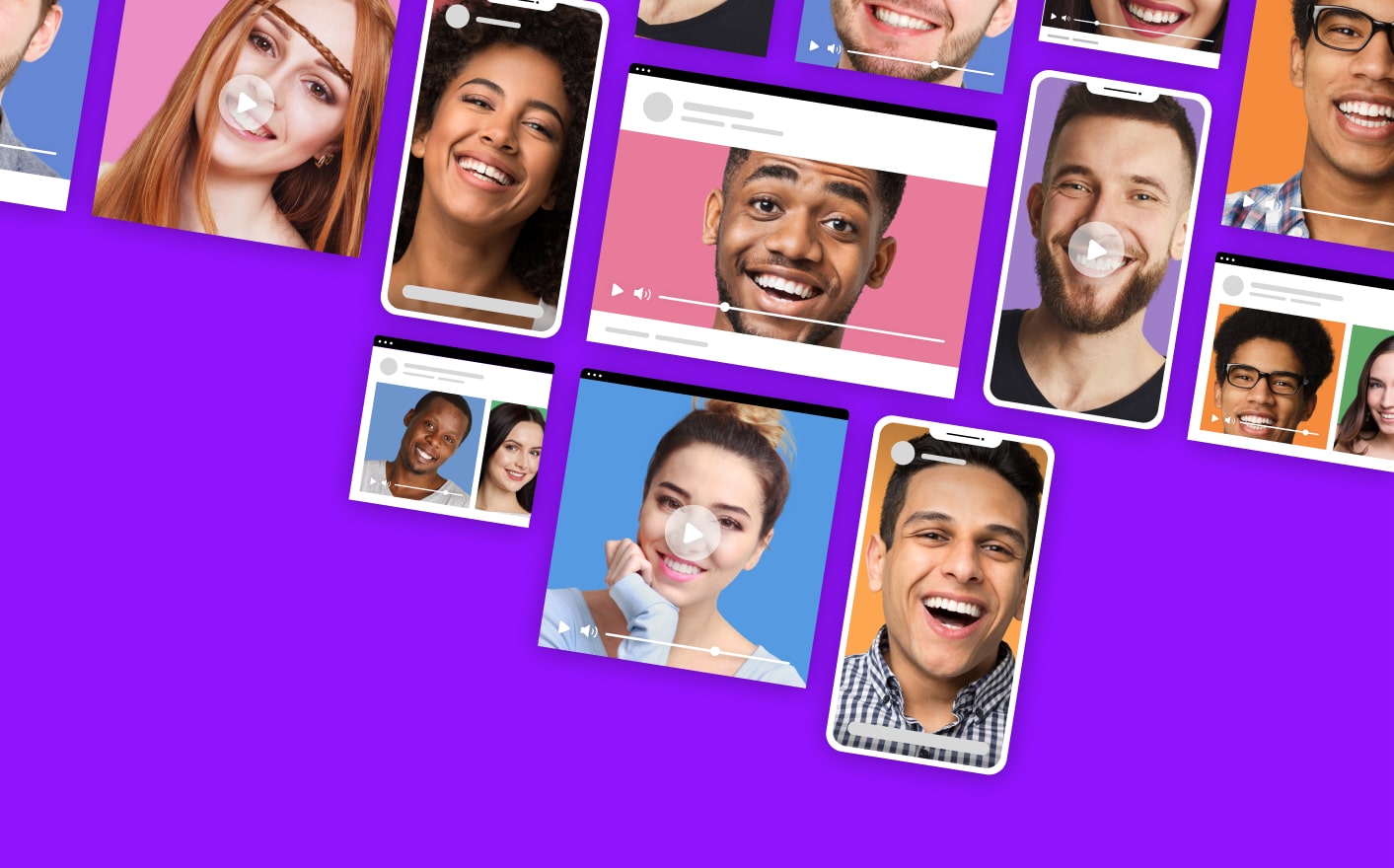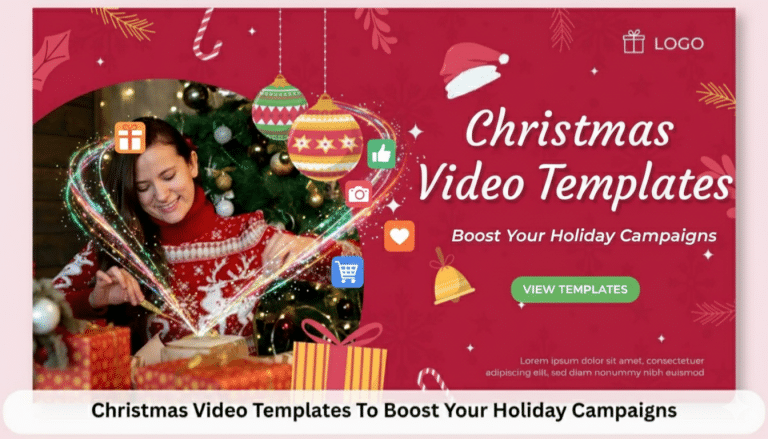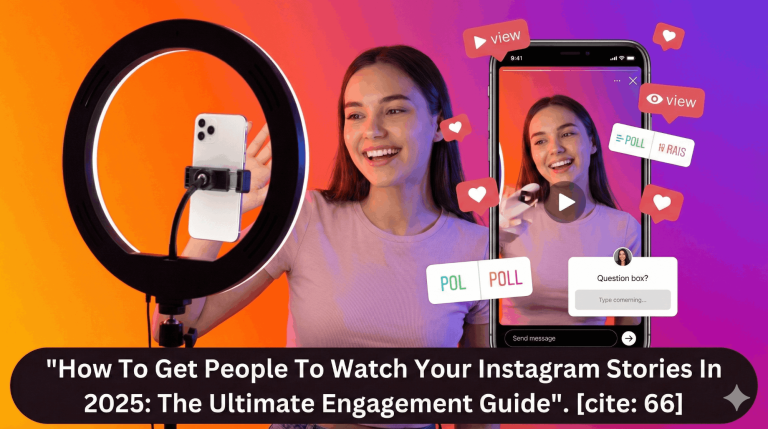
A Guide to Video Marketing with Buyer Personas
When it comes to marketing, knowing who you’re trying to reach and persuade is essential. A winning video marketing strategy is one that is informed by research and data to strategically target a specific population. And one tool that is invaluable in helping clarify your target audience is the buyer persona. Functioning a bit like a character representing your ideal customer, buyer personas have a number of important benefits, able to guide your marketing strategy to be as effective as possible.
In this article, we’ll show you exactly how to build a buyer persona for your business, and how you can use your buyer personas to help make your video marketing efforts more successful.
What Is a Buyer Persona?
A buyer persona is a fictional person used to represent a consumer that a brand wants to market to. Buyer personas can get quite specific with names, ages, likes, dislikes, jobs, and other lifestyle details all working together to flesh out a lifelike character. It’s also not uncommon for brands to have multiple buyer personas representing different segments of their target audience.
For example, a homeschool textbook company may have a buyer persona named Single Mom Susan representing the single moms that they try to sell to. Single Mom Susan is 30 to 40 years old, has multiple children, and juggles homeschooling her children with working a full-time job. Her biggest challenge is finding the time to plan a homeschool curriculum in her busy schedule.
Single Mom Susan is likely to come up in most if not all marketing conversations that the textbook company has, serving as a guiding light for decisions about things like messaging, tone, marketing channels, and more.
The Benefits of Buyer Personas
In addition to simply being fun, working with buyer personas has a number of tangible benefits for businesses. First and foremost, it improves the quality of a business’s marketing efforts by helping them develop a better understanding of who their target customer is, what they need, what problems they’re dealing with, and how they make buying decisions.
With this valuable information, companies are able to engage in more targeted marketing that helps reduce marketing costs. It also makes sure that the leads they do get are higher in quality and more likely to convert into actual paying customers. And finally, buyer persons are able to help businesses develop a consistent brand by serving as a sort of guideline for their messaging and branding decisions.
This isn’t all just theoretical. Buyer personas have proven ROI, and have been shown to increase everything from web traffic and organic search traffic to email open rates, click-through rates, and conversion rates.
How to Create a Buyer Persona
In order to get the most out of your buyer personas, it’s best to make them thoughtfully on the basis of concrete data. By following these steps, you can make sure that your buyer personas are well thought-out and effective.
Set Your Goals
To begin with, think about why you’re making your buyer personas. What are your goals for them? Do you plan to mainly use them for marketing? Sales? Lead gen? Something else?
Knowing what you want to achieve with your buyer personas will be doubly helpful as it will help guide you in making the persona while also giving you metrics to use later on that will help you evaluate whether or not your personas are effective, accurate, and helpful.
Research
Once you know what you want to achieve with your personas, the next step is to do some thorough research. Your goal is to learn as much information as possible about your industry and customers to get a sense of who your buyer persona is representing. There are many different things you can do as part of this research, including:
- Performing market research about your industry and niche
- Discovering how leads and customers have found your content
- Capturing demographic information through your website
- Reviewing historical customer service and sales data to see what types of customers are in contact with your company
- Interviewing existing and prospective customers to learn about them and what their thoughts are on your product or service
This step of the process should be one of the lengthier ones as you gather a large amount of important data that will help you moving forward.
Find Patterns
Okay, now you’ve gathered a mountain of raw data about your existing and target customers. It’s time to actually parse through and analyze that data in order to identify patterns and commonalities that come up again and again. Do most of your customers fall into a certain age group? Do they all report dealing with the same problem? Did most of them learn about your company from a similar source? Make a list of all of the patterns that emerge.
Define Your First Persona
Once you have all of your patterns written down, you’re ready to create your first buyer persona! As you’re defining this persona, try to think of them as a real human being. What is their life story? What motivates them? Aim to understand more than just demographic details, but also their psychology. By the end of the process, your buyer persona should have (at least):
- A name
- Demographic information such as age, gender, location, marital status, etc.
- Job title
- Habits and work life
- Desires and needs
- Problems
- Objections they might have to buying your product or service
- Things they might say written as quotes
Let’s look at an example. This buyer persona is called Dog Owner David. Dog Owner David is a 25-year-old single man living on the U.S. coast. He’s a young professional working in tech who just got his first dog. He loves his dog deeply but has a hard time giving him enough walks because he is so busy with work. He needs a solution that will make sure his dog gets enough exercise without making him take time off of work. Dog Owner David makes good money and is willing to spend it on his beloved dog. His priority is good service and high quality. He feels that he must really trust any business that interacts with his dog.
Can you guess what type of company would have used Dog Owner David as a persona?
Create More Buyer Personas as Necessary
Once you’ve created your first buyer persona, you can move on to creating more. While one buyer persona may be enough for your company, most businesses use more than one because it’s common for brands to target multiple different audiences and demographic segments. The good news is that buyer personas are easier to create the more you practice.
Get to Know Your Personas
Once you’ve built your buyer personas, your final step is to really, truly get to know them. Spend time with them. Have conversations with them, maybe with one member of your team role-playing the persona and another playing the role of a salesperson or marketer. You can even find a photo or draw a picture to represent your buyer persona and print it out to hang up in your office. The idea here is that the more intimately you know your buyer persona, the easier it’ll be to market to them.
Implementing Buyer Personas in Video Marketing
Now that you have your buyer personas, it’s time to think about how you will actually use them in your marketing. Here are some ideas for ways you can implement buyer personas into your video marketing strategy.
Inform Your Style
The first thing that your buyer persona can do is help to inform your decisions about video style. This applies to everything from the tone of the language you use, the design choices you make (like colors, images, and fonts), and the messaging of the scripts you write.
For example, if your buyer persona Teenager Tina is a Gen Z high school student, you might choose to use bright colors, modern slang, and lighthearted humor. But if you’re marketing toward a buyer persona called CTO Charlie, chances are that you’ll use more professional and authoritative language and imagery.
Promo tip: You can quickly and easily customize the look of a video with Promo’s online video maker. Change out your colors, photos, and fonts with ease.
Get Personal With Your Content
One of the greatest strengths of video marketing is its ability to offer an authentic, human touch. And buyer personas can help make the most of this strength by allowing you to get even more personal and targeted with your videos.
When planning out your content for the week or month ahead, make sure to aim to create relevant content responding to your buyer personas’ interests, needs, problems, and questions.
For example, if you found out in your research phase that your buyer persona Retired Rhonda has a difficult time figuring out how to use your product, you may choose to make lots of explainers and how-to video content. If your buyer persona Developer Daniel lives, breathes, and eats high-tech, you can create videos that share high-tech industry news or trends. If your buyer persona West Coast Wendy lives in Southern California, you may mention local traditions and references.
Choose the Right Platforms
A major advantage of buyer personas for video marketing is their ability to help you choose which platforms to post your videos on. There are so many social media networks these days that allow you to publish video content including Facebook, YouTube, Instagram, LinkedIn, TikTok, Snapchat, and more. It’s difficult to keep up with them all of them at once. By asking yourself, “On which social media platform does my buyer persona spend most of their online time?”, you can make an informed decision about what platforms to focus your marketing efforts on.
Promo tip: Promo’s video maker allows you to easily adjust the specs of your video to those that best fit your chosen platform. You can also use Promo to pre-schedule your videos to publish on your platform of choice.
Choose the Right Length
Video length is quite important, having a tangible impact on your video’s success. Too long of a video ad can cause people to lose interest and click away, but too short of a video tutorial may lack clarity and not be as effective.
Buyer personas can come in handy here to help you decide how long to make a certain video. For example, if your buyer persona CEO Sally makes important buying decisions on behalf of her entire business, you might be able to get away with a longer, more informative video than if you’re targeting Dog Owner Daniel who is quite busy and doesn’t have time to watch long videos.
Segment Your Messaging With Multiple Videos
An advanced marketing technique is to create multiple versions of the same video for different buyer personas. This way, you can make small adjustments to each video’s design, messaging, and length to better reflect the needs and demographics of each buyer persona.
When choosing the people that will appear in your video – whether it’s original footage or stock footage/photos – be sure to choose people who correspond with the buyer persona you’re targeting. This will help the target audience “see themselves” and feel recognized.
Promo tip: While creating multiple versions of the same video may sound time-consuming, Promo’s video maker can actually help you do it quite quickly. Just use the same template to create multiple versions of one video, customizing each one as is relevant to the segment you’re targeting.
The Power of Buyer Personas
Buyer personas are a popular sales and marketing tool for a reason. Not only are they fun to work with, but they are able to offer a lot of valuable information about your audience, helping you to predict which marketing decisions and campaigns will be most successful. Chances are high that your business will benefit from creating a buyer persona or two, so why not try it? Your video content will only become stronger and more impactful as a result.



